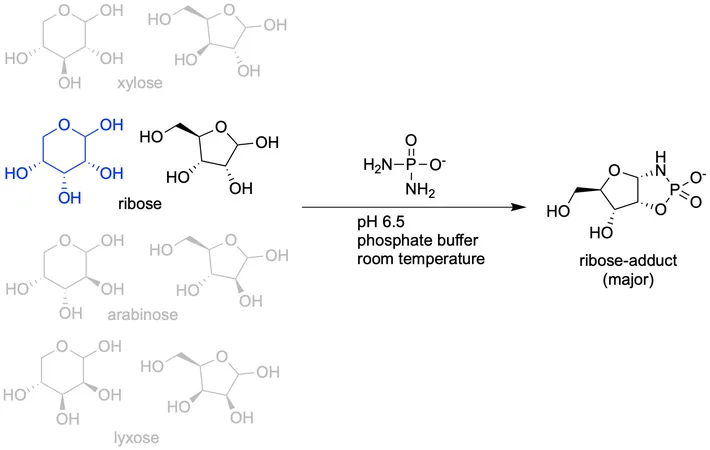
New Discovery from Asteroid Ryugu Unveils Secrets of Earth's Habitability – Are We Alone?
2024-09-26
Author: Li
New Discovery from Asteroid Ryugu Unveils Secrets of Earth's Habitability – Are We Alone?
In a groundbreaking study published in *Nature Astronomy*, a team of scientists, including Professor Ian Franchi and Dr. Richard Greenwood from the Open University, has unearthed tantalizing clues about how our planet evolved into a life-sustaining haven. Their research focuses on samples collected from Asteroid Ryugu, which was brought back to Earth by the Japanese Space Agency's (JAXA) Hayabusa2 mission in 2020.
The Asteroid That Could Change Everything
Asteroid Ryugu is a primitive, carbon-rich body that has remained untouched by environmental factors. It is believed to be around 4.6 billion years old, dating back to the formation of our Solar System. The pristine condition of Ryugu's samples offers an unparalleled opportunity for scientists to explore the earliest materials that our planet may have originated from.
One of the most astonishing findings is the presence of phosphorus and nitrogen-rich compounds found in the asteroid's samples. These compounds, termed hydrated ammonium, magnesium, and phosphorus-rich (HAMP) grains, are extraordinarily soluble in water. This is crucial because these grains can potentially dissolve in early Earth's water reservoirs, unlike more common phosphate compounds that lack the solubility necessary to contribute to the emergence of life.
A Glimpse Into Our Planet’s Past
The Earth, initially a dry and hostile environment near the Sun, raises questions about how it accumulated crucial elements like water. The findings from Ryugu’s ancient materials suggest that life-essential nutrients could have been supplied by such asteroids during Earth's formative years. The notion that water-bearing asteroids were responsible for delivering both water and essential nutrients like phosphorus and nitrogen could reshape our understanding of how life originated on our planet.
Dr. Richard Greenwood emphasizes the implications of this research, stating, “Our study reveals how the building blocks of life were likely transported from the outer Solar System to Earth. The material returned from primitive asteroids like Ryugu sheds light on how our home planet transitioned from a barren world to a thriving oasis teeming with life.”
Implications Beyond Earth
This discovery not only provides insight into the origins of Earth but also raises questions about the potential for life beyond our planet. If similar asteroid processes occurred elsewhere in the universe, it might mean that other planets could also possess the necessary ingredients for life.
The research team, headed by Cedric Pilorget from the University of Paris-Saclay, is now poised to continue this line of inquiry, examining how these ancient materials can elucidate not just the story of our planet, but possibly others in the cosmos.
While we may be far from finding extraterrestrial life, the discovery of HAMP grains in asteroid samples provides an exciting clue that the universe could still hold the secrets to life's greatest mysteries. Stay tuned, as our pursuit of knowledge about life beyond Earth is only just beginning!



 Brasil (PT)
Brasil (PT)
 Canada (EN)
Canada (EN)
 Chile (ES)
Chile (ES)
 Česko (CS)
Česko (CS)
 대한민국 (KO)
대한민국 (KO)
 España (ES)
España (ES)
 France (FR)
France (FR)
 Hong Kong (EN)
Hong Kong (EN)
 Italia (IT)
Italia (IT)
 日本 (JA)
日本 (JA)
 Magyarország (HU)
Magyarország (HU)
 Norge (NO)
Norge (NO)
 Polska (PL)
Polska (PL)
 Schweiz (DE)
Schweiz (DE)
 Singapore (EN)
Singapore (EN)
 Sverige (SV)
Sverige (SV)
 Suomi (FI)
Suomi (FI)
 Türkiye (TR)
Türkiye (TR)
 الإمارات العربية المتحدة (AR)
الإمارات العربية المتحدة (AR)